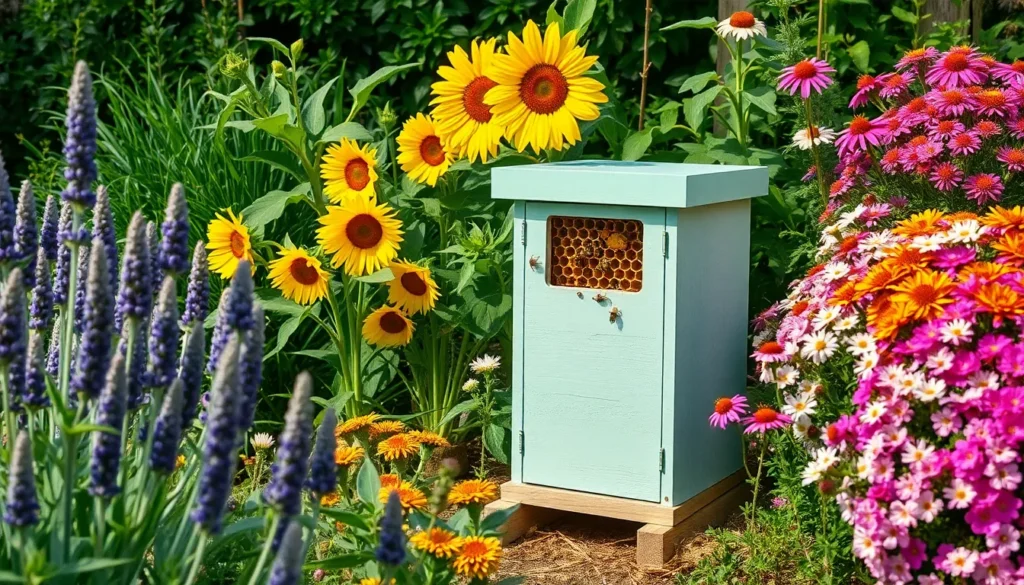Imagine stepping into your backyard and hearing the gentle hum of bees busily flitting from flower to flower, knowing you’re playing a vital role in nurturing nature’s tireless pollinators. Backyard beekeeping isn’t just a hobby; it’s a rewarding endeavor that connects you to the rhythms of the natural world, enriching your garden and your life. Whether you’re a budding gardener curious about adding a hive to your outdoor space or a seasoned green thumb looking to diversify your backyard ecosystem, beekeeping offers a unique blend of challenges and rewards that can transform the way you engage with your garden.
Our buzzing companions play a crucial role in sustaining the health of our gardens and the planet. By delving into backyard beekeeping, you’ll not only support these essential creatures but also learn how to produce your own honey, wax, and more. In this article, we’ll walk you through ten straightforward basics that demystify beekeeping, making it accessible whether you have a sprawling yard or a cozy patch of green. From selecting the right hive to understanding bee behavior, these tips will empower you to begin your beekeeping journey with confidence and joy.
As you read on, you’ll discover how to create a thriving haven for bees right in your backyard. We’ll cover practical advice on hive placement, seasonal care, and the art of harvesting honey, ensuring you’re equipped with the knowledge you need to succeed. Embrace this opportunity to foster a harmonious relationship with nature, enhance your gardening skills, and contribute to biodiversity. Let’s embark on this delightful adventure together, where every buzz in your garden tells a story of growth, community, and sustainability.
Understanding Beekeeping Essentials

Understanding the essentials of beekeeping is crucial for successful backyard beekeeping. Proper hive placement is key; choose a spot that is sheltered from strong winds and receives plenty of morning sun.
To start, you’ll need to acquire the basic equipment, including a bee suit, smoker, and hive tool. These items not only keep you safe but also ensure you can manage your hives effectively.
Bees require a consistent water source, so consider placing a shallow water dish with stones near the hive. This helps bees stay hydrated and prevents them from seeking water in less desirable locations like neighbors’ pools.
For beginners, selecting the right bee species is important; Italian bees are often recommended due to their gentle nature and good honey production. As you gain experience, you might explore other species suited to your local climate and personal preferences.
Choosing the Perfect Hive

When choosing the perfect hive, consider the size of your space and the number of bees you wish to keep. A Langstroth hive is ideal for beginners due to its modular structure, allowing for easy expansion as your colony grows.
For those with limited space, a top-bar hive might be a more suitable option, as it takes up less room and is easier to manage. This type of hive also provides a more natural environment for the bees, which can be beneficial for their health and productivity.
Materials matter too; hives made from untreated cedar or pine offer excellent insulation and durability. Always ensure your hive has a sloped roof to prevent water accumulation, which can lead to moisture buildup and harm the bees.
Advanced beekeepers might explore the use of Flow Hives that simplify honey extraction without disturbing the bees. While these can be more expensive, they offer the convenience of collecting honey directly from the hive, making them a worthwhile investment for those committed to beekeeping.
Selecting Bee-Friendly Flowers
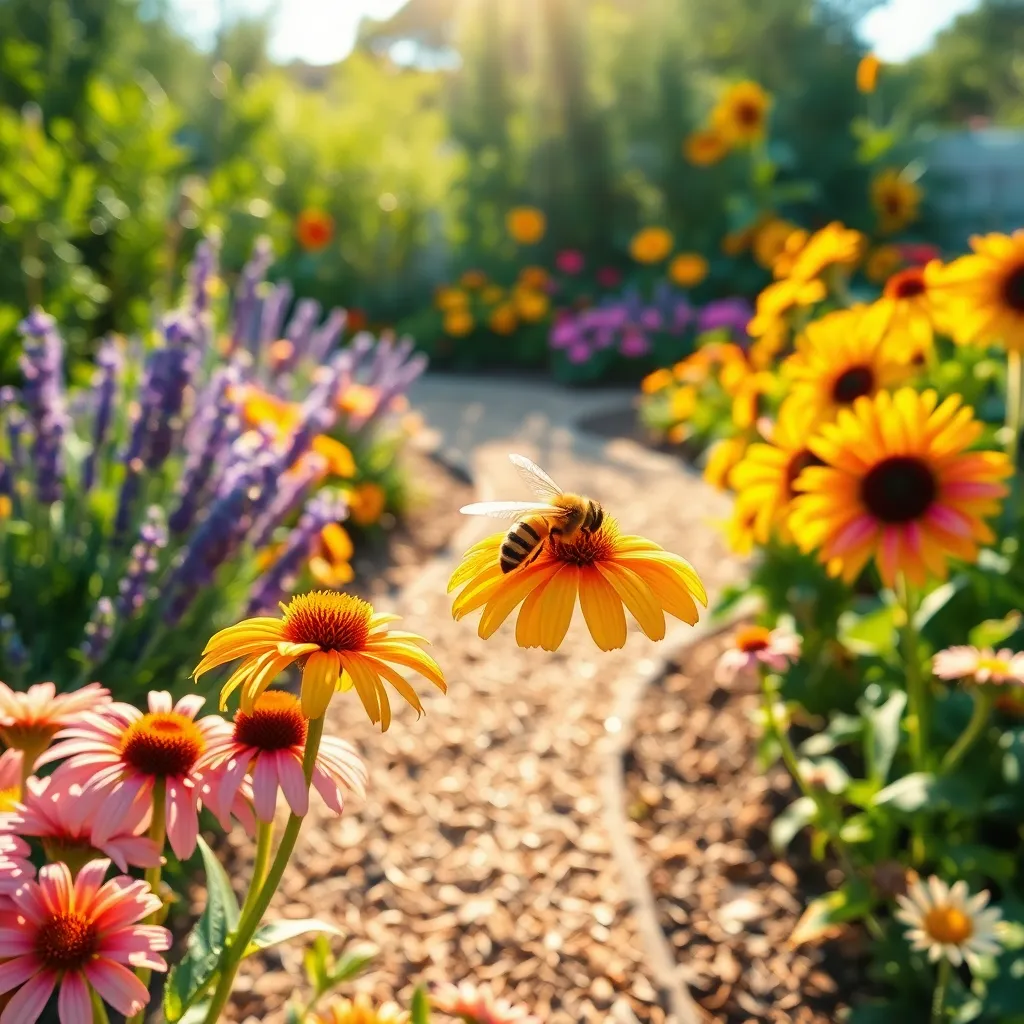
Creating a bee-friendly garden involves choosing a variety of flowers that provide ample nectar and pollen. Opt for native plants when possible, as they are best suited to local climates and are more likely to thrive with less maintenance.
Consider planting a mix of flowers that bloom at different times throughout the growing season. This ensures that bees have a continuous food source from early spring to late fall, which is essential for their health and productivity.
For beginners, starting with easy-to-grow varieties like coneflowers, black-eyed Susans, and lavender can provide a solid foundation. These plants are hardy and often require little more than basic care, such as placing them in areas with full sun and well-draining soil.
Advanced gardeners might explore incorporating more diverse species such as borage or bee balm, which attract a wide range of pollinators. To support these plants, ensure they have consistent moisture, particularly during dry spells, and amend the soil with compost to enhance fertility.
Regularly deadhead flowers to prolong blooming periods and encourage new growth. Additionally, avoid using pesticides, as they can harm bees and other beneficial insects crucial to a healthy garden ecosystem.
Understanding Bee Behavior Basics
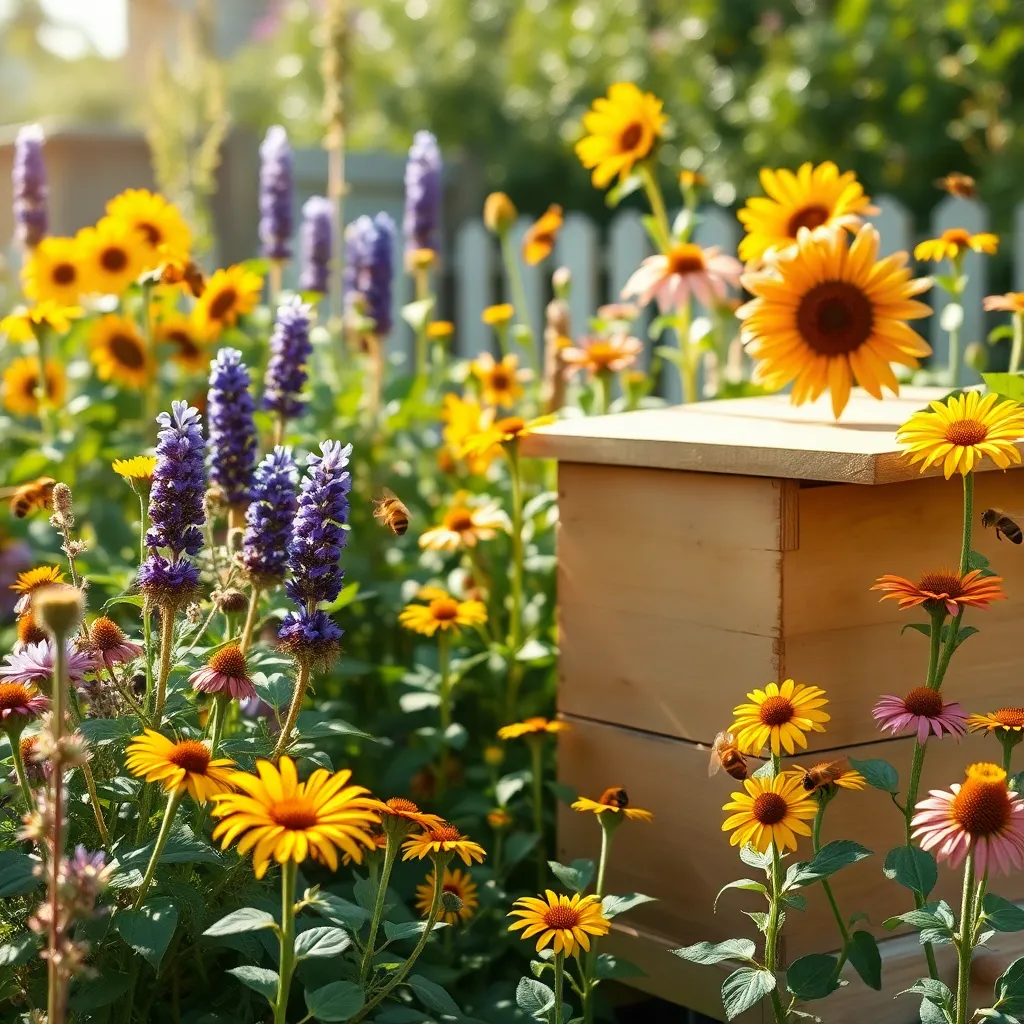
Understanding the behavior of bees is crucial for successful backyard beekeeping. Bees are remarkable creatures with a complex social structure that requires careful observation and respect from gardeners. By watching how bees interact with their environment, you can gain insights into their needs and behaviors. Observing bee foraging patterns, for instance, can help you determine the best times to plant or tend to your garden.
Bees are most active during warm, sunny days when flowers are in bloom. It’s important to maintain a garden that provides continuous blooms from early spring to late fall. Plant a mix of flowering plants that offer nectar and pollen throughout the growing season. This not only sustains your bee population but also enhances the overall health of your garden.
When bees are collecting nectar, they’re also pollinating your plants, which is beneficial for fruit and vegetable production. To encourage this process, ensure that your plants are well-watered and healthy, as stressed plants may produce less nectar. Keeping your garden free of pesticides and harmful chemicals is also essential, as bees are sensitive to these substances.
Advanced beekeepers can enhance their understanding by noting the different roles within the hive, such as workers, drones, and the queen. Each bee type has specific duties that contribute to the colony’s survival and productivity. By learning these roles, you can better support the hive’s natural processes and intervene when necessary.
Protective Gear and Safety Tips
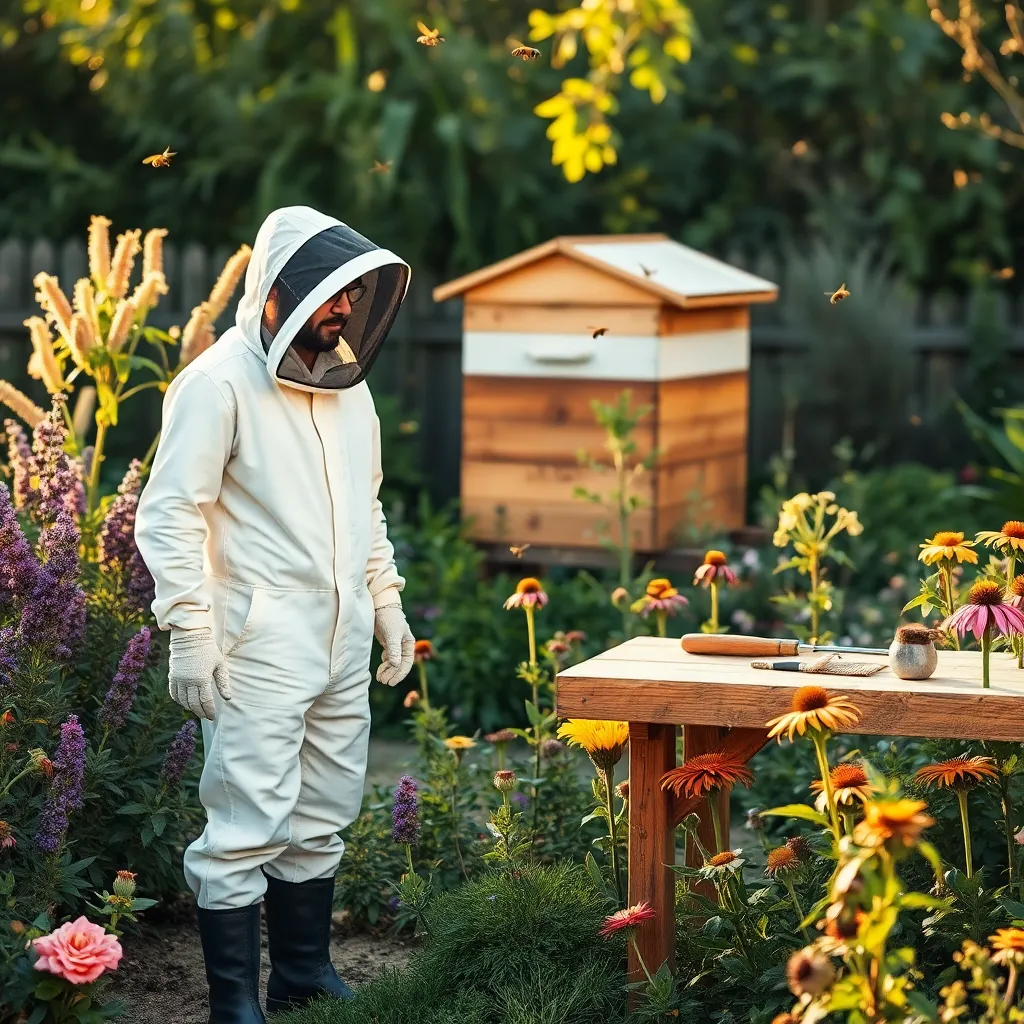
When engaging in backyard beekeeping, wearing the right protective gear is essential for both your safety and comfort. A full bee suit, complete with a veil and gloves, is highly recommended to minimize the risk of stings while working with your hives.
Bee suits are typically made from light-colored, smooth materials that help prevent bees from getting agitated. Ensure your suit fits well but is not too tight, allowing for ease of movement while providing a secure barrier against bees.
Investing in high-quality gloves is crucial, as they protect your hands while maintaining dexterity. Look for gloves made from thick leather or rubber to provide the best protection without sacrificing flexibility.
Aside from protective clothing, it’s important to consider the placement of your hives to enhance safety. Positioning the hives away from high-traffic areas and ensuring they are stable and secure can prevent accidents and disturbances.
Always keep a first aid kit nearby in case of emergencies, such as bee stings. Including items like antihistamines and a sting cream can help quickly alleviate any reactions you might experience.
For those who are more experienced, learning to interpret bee behavior can further enhance safety. Understanding the signs of a hive’s mood can guide you in approaching the hives more confidently and safely.
Setting Up Your First Hive
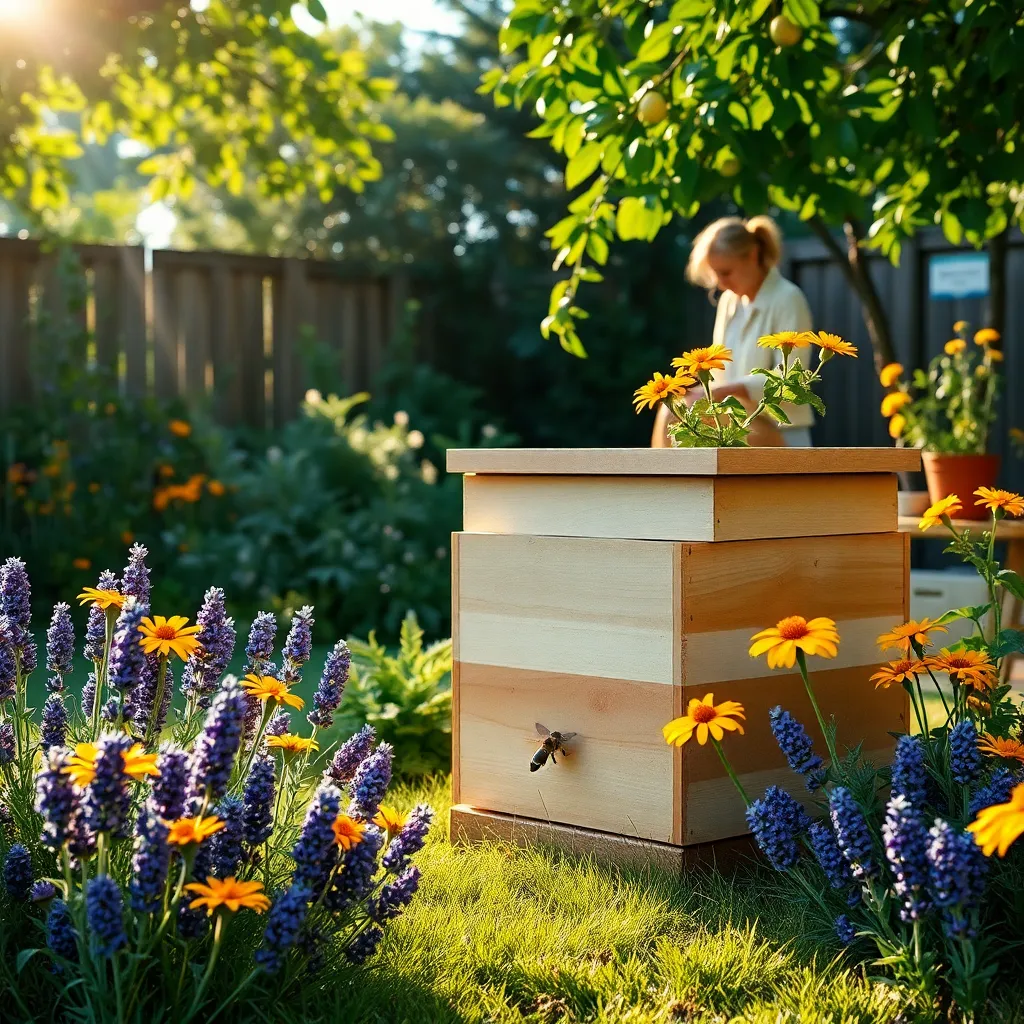
Starting your first hive can be a rewarding experience and adds another layer of life to your garden. Begin by choosing a suitable location that receives morning sun and is sheltered from strong winds.
Be sure to select a hive type that suits your needs, such as the popular Langstroth or the top-bar hive. Each type has its own advantages, with the Langstroth being known for its ease of expanding the colony.
Next, prepare the ground by leveling it and ensuring proper drainage to keep the hive dry. Elevate the hive using a sturdy stand or concrete blocks, which helps prevent moisture buildup and deters pests.
When setting up your hive, provide a nearby water source to keep your bees hydrated. An easy way to do this is by placing a shallow dish filled with pebbles and water close to the hive.
Maintaining Hive Health

Ensuring the health of your beehive is crucial for productive beekeeping. Regular inspections are vital, as they help spot potential issues such as diseases or pest infestations early on.
Observing bee behavior at the entrance of the hive can provide valuable insights. Look for signs of normal activity, such as bees flying in and out, and avoid any unusual lethargy or aggression, which may indicate problems.
To maintain hive health, it’s important to keep an eye on the hive’s internal environment. Ensure that the hive is well-ventilated and free from excess moisture, as damp conditions can lead to mold and weaken the colony.
Feeding your bees becomes necessary during times of scarce nectar flow. Consider supplementing their diet with sugar syrup or pollen patties, especially in early spring or late fall when natural food sources are limited.
Feeding Your Backyard Bees
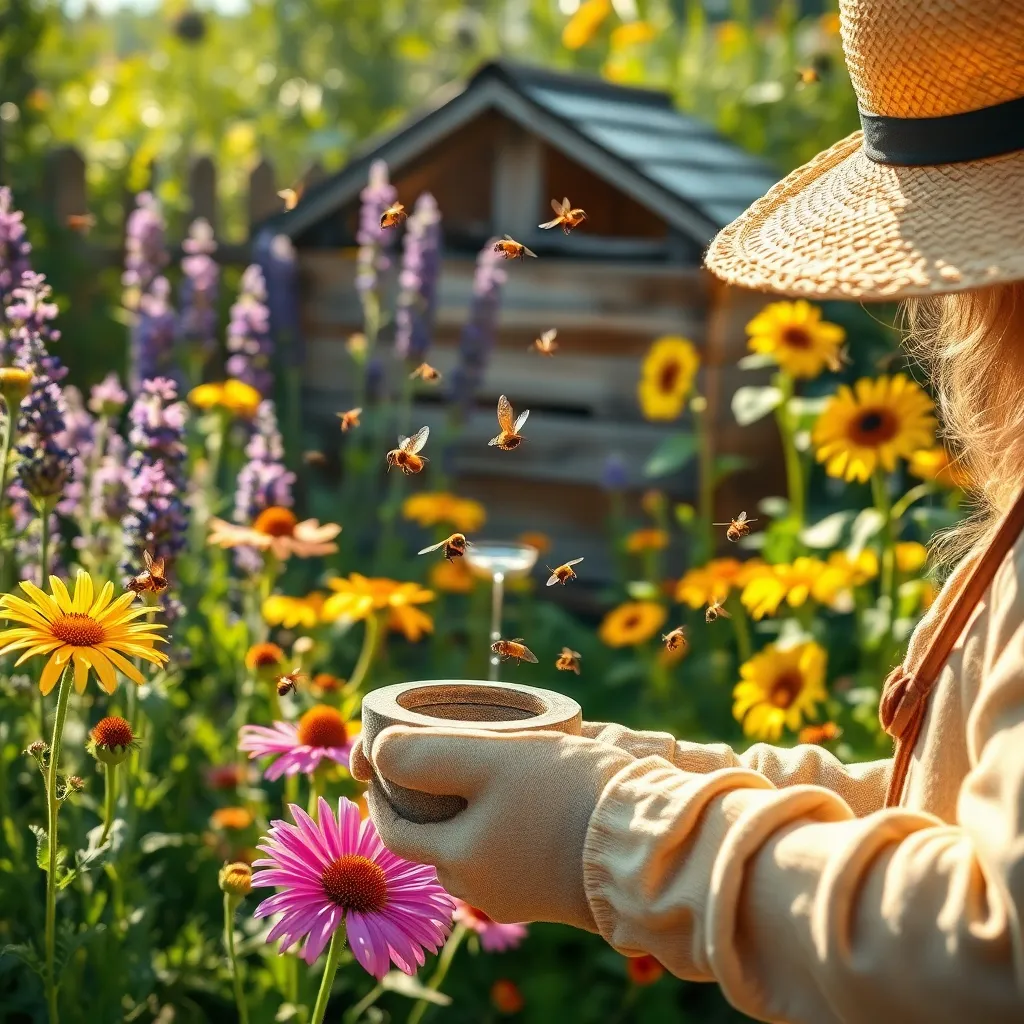
Feeding your backyard bees is a crucial step to ensure they thrive and support your garden’s ecosystem. Bees require a variety of nectar and pollen sources to maintain hive health and productivity.
Incorporate a diverse array of bee-friendly plants to provide continuous food sources throughout the growing season. Consider planting flowers like lavender, sunflowers, and borage, which are known for their high nectar yield and attractiveness to bees.
For beginners, starting with a mix of annuals and perennials can create a reliable food source over time. Make sure to plant in clusters to attract more bees, and choose plants with staggered bloom times to ensure a steady supply of food.
Advanced gardeners might explore the benefits of native plants, which often offer more nutritious nectar and pollen compared to exotic species. Native plants are well-adapted to local climates and can thrive with minimal intervention, reducing the need for fertilizers and pesticides.
To further support bee nutrition, provide a shallow water source with stones or marbles for landing pads. This simple addition helps bees stay hydrated, especially during hot weather, and contributes to their overall health.
Monitoring Bee Activity Regularly
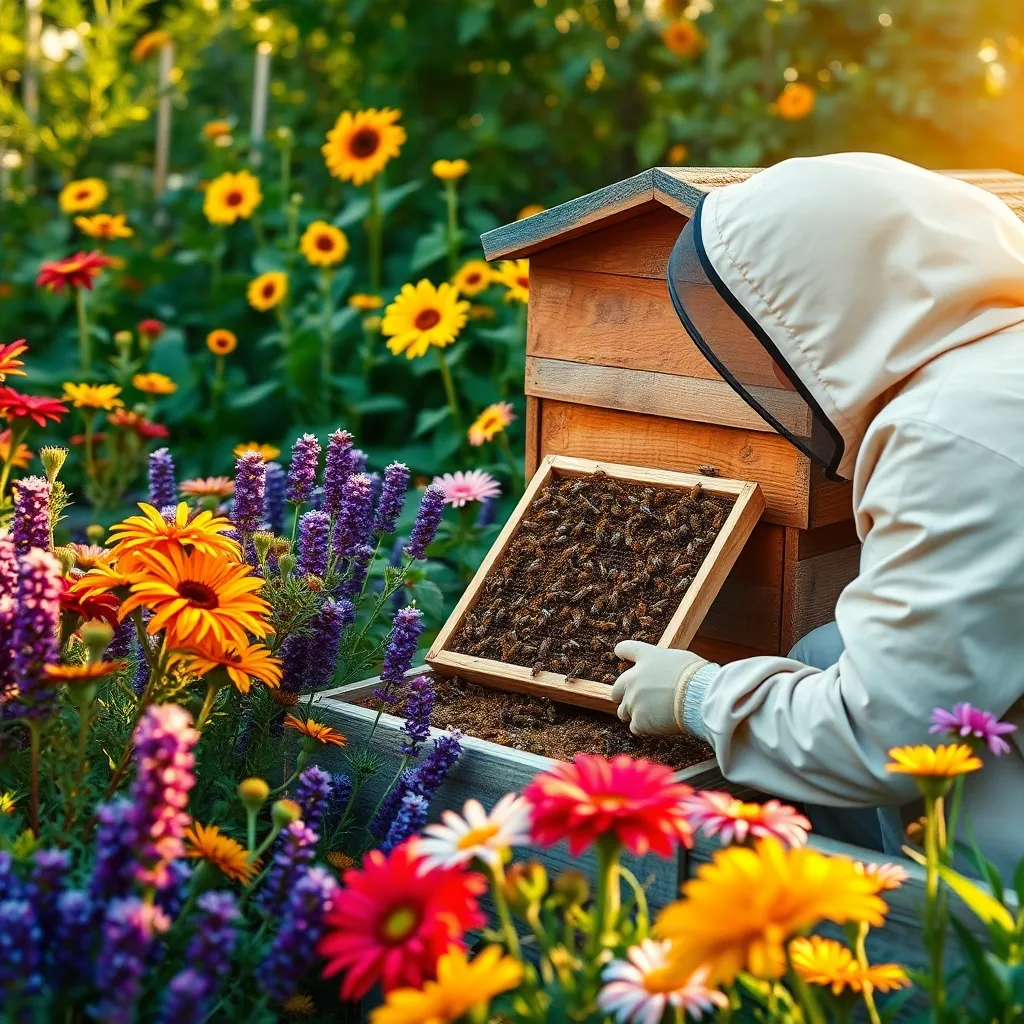
Regularly monitoring bee activity in your backyard hive is crucial for ensuring the health of your colony. Observing bees entering and leaving the hive can give you insights into their productivity and overall wellbeing.
Start by checking the hive entrance during different times of the day to see if there is consistent activity. Bees should be flying in with pollen on their legs, which is an indicator of successful foraging and a healthy hive.
It’s important to perform a more detailed inspection every few weeks, especially during the peak of the season. Look for signs of disease, such as unusual bee behavior or dead bees around the hive entrance.
Advanced beekeepers might consider using a hive scale to monitor the weight of the hive, which can indicate nectar flow and honey production. This tool helps you track the hive’s productivity without frequent intrusive inspections.
Harvesting Honey with Care

When it comes to harvesting honey with care, timing is crucial. Generally, you should aim to harvest honey in late summer or early fall when the nectar flow is at its peak, ensuring a bountiful yield.
Begin by observing your hive’s activity to determine the right time for harvesting. A full super with capped honey is a clear indication that the honey is ready to be collected.
To remove bees gently from the frames, use a bee escape or a soft brush. This ensures minimal disturbance to the hive, keeping your bees calm and reducing the risk of stings.
Once you’ve removed the frames, use a hot knife or an uncapping fork to carefully remove the wax cappings. This step is essential to access the honey, and doing it with precision will help maintain the integrity of the comb for future use.
After uncapping, place the frames in a honey extractor. Spinning them at a moderate speed will efficiently extract the honey without damaging the comb, allowing you to reuse the frames.
Finally, strain the honey through a fine mesh to remove any remaining wax particles or debris. This will result in pure, clean honey ready for bottling and ensures a high-quality product for your use or sale.
Conclusion: Growing Success with These Plants
As we wrap up our exploration of ’10 Easy Backyard Beekeeping Basics,’ let’s revisit the key relationship concepts that not only connect us to nature but also to each other. From understanding the importance of communication in setting up your hive to the patience required in nurturing your bee community, these principles mirror the foundations of strong human connections. We discussed the significance of mutual support, trust, and respect through bee behavior patterns, and how your role as a beekeeper parallels being an attentive partner. Just as bees thrive in a harmonious environment, relationships flourish with attention and care.
Now, take immediate action by setting aside a moment this week to implement one of these principles in your personal relationships. Whether it’s practicing patience, fostering mutual support, or simply listening, each step brings you closer to relational harmony.
Bookmark this article as your go-to guide for nurturing both your backyard hive and your personal connections. Doing so will ensure you have these invaluable insights at your fingertips whenever you need a refresher. As you cultivate these practices, look forward to a future of enriched relationships, where both your bees and bonds flourish in harmony. Remember, every small effort you make today sets the foundation for lasting success tomorrow.

